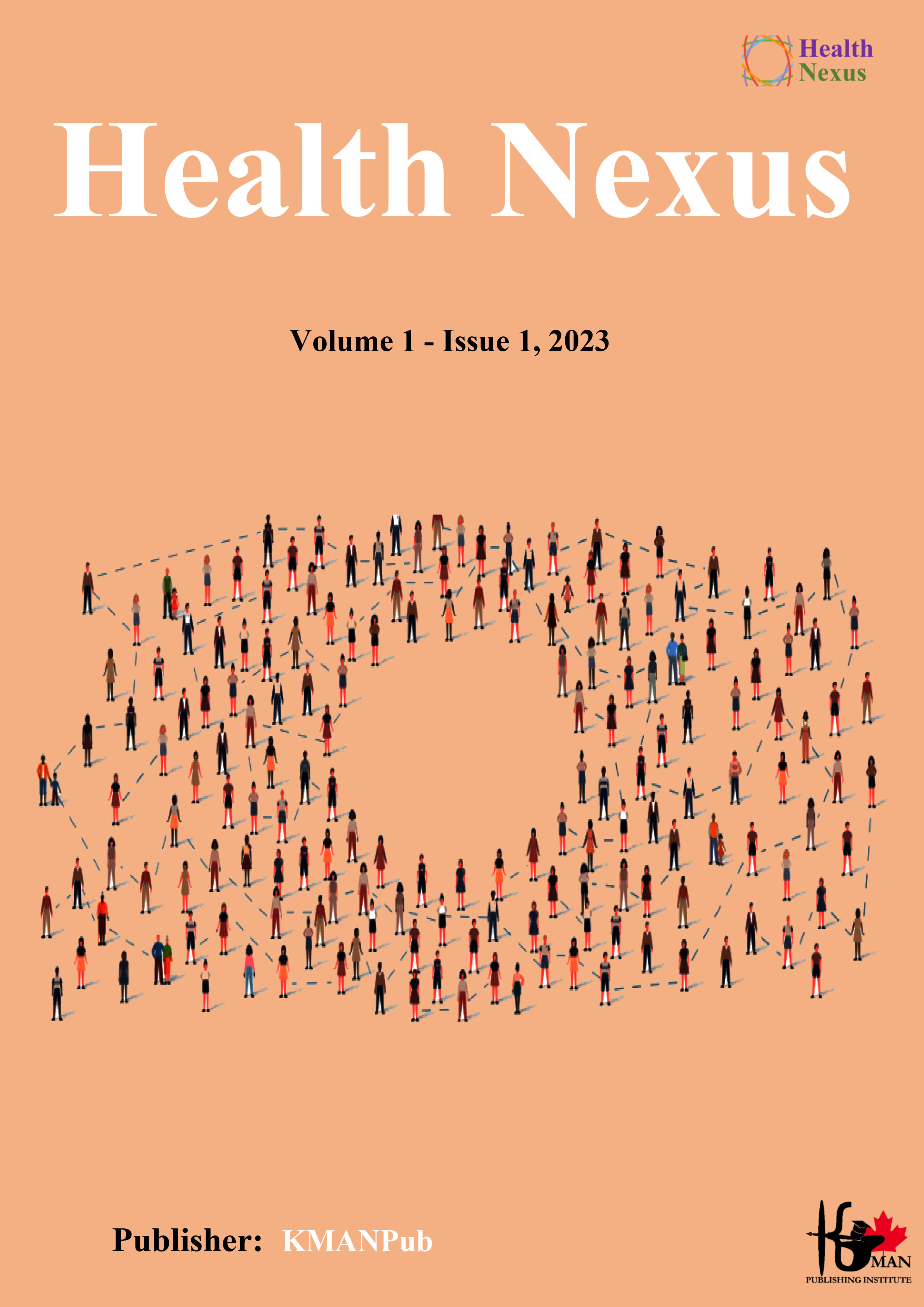The Role of Whey Supplementation on Sensation Seeking, Parent-child Relationship, Family Communication, Anger and Sex Desire Among Athletes, Athletes Using Whey and Normal Population
Keywords:
Whey supplementation, Sensation seeking, communication with parents, family communication, anger, sexual desireAbstract
The purpose of this research was to examine the role of Whey protein in inducing changes in sensation-seeking, parent-child relationships, family relationships, anger, and sexual desire among regular male athletes, supplement-consuming athletes, and ordinary men in the city of Isfahan. The study population included regular athletes, supplement consumers, and ordinary men in Isfahan. The research method was causal-comparative. The sample size consisted of 30 individuals per group, with the Whey consuming group selected through convenience sampling, and the other two groups were matched and chosen accordingly. The instruments used included scales for family relationships; attachment to parents; sensation-seeking; anger expression, and sexual desire. The research data were analyzed using descriptive statistics (mean and standard deviation) and inferential statistics (multivariate analysis of covariance) through SPSS software, version 23. The results indicated that the three groups did not significantly differ in the research variables. Thus, it can be stated that Whey protein does not play a significant role in creating changes in the psychological and family-related variables mentioned in the studied groups.
Downloads
References
1. Colman JB, Laureano DP, Reis TM, Krolow R, Dalmaz C, da Silva Benetti C, Silveira PP. Variations in the neonatal environment modulate adult behavioral and brain responses to palatable food withdrawal in adult female rats. International Journal of Developmental Neuroscience. 2015;40:70-5. [PMID: 25450525] https://doi.org/10.1016/j.ijdevneu.2014.11.003
2. Hendy HM. Which comes first in food–mood relationships, foods or moods? Appetite. 2012;58(2):771-5. [PMID: 22123609] https://doi.org/10.1016/j.appet.2011.11.014
3. Freeman WL. The relationship between habitual dietary protein intake and dual task performance in sedentary, recreationally active, and masters athlete older adults. 2017.
4. Hosseinzade N, Rajai GhasemGheshlagi N, Tahmasbi R, Khorjahani A, Ghalavand M. The effect of pea and Whey protein isolate supplementation on muscle injury following a session of intense functional activity. Jundishapur Scientific Medical Journal. 2022;21(4):524-35. [PMID: 26342064] [PMCID: PMC7002872]. https://doi.org/10.1152/ajpheart.00208.2015
5. Karimian J, Entezari M, Pahlavani N, Papi B, Rasad H, Chaboksavar F. Evaluation the effects of L-arginine supplementation on exercise performance, body composition and serum sodium and potassium in healthy male athletes. ISMJ. 2016;18(6):1186-97. https://doi.org/10.32598/JSMJ.21.4.2547
6. Gahche J. Dietary supplement use among US adults has increased since NHANES III (1988-1994): US Department of Health & Human Services, Centers for Disease Control and …; 2011. [PMID: 26342064] [PMCID: PMC7002872]. https://doi.org/10.1152/ajpheart.00208.2015
7. Rastgoo S, Ebrahimi Daryani N, Hekmatdoost A. Effects of Glutamine Supplementation against Iso Whey Protein on Clinical Symptoms and Quality of Life of the Patients with Irritable Bowel Syndrome. Iranian Journal of Nutrition Sciences & Food Technology. 2022;16(4):19-28. [PMID: 26342064] [PMCID: PMC7002872]. https://doi.org/10.1152/ajpheart.00208.2015
8. Zahabi G. Effect of whey protein & creatine supplementation on the fitness indicators, velocity and muscle hypertrophy of untrained men over a period of resistance training. Iranian Journal of Nutrition Sciences & Food Technology. 2015;10(2):19-28. [PMID: 26342064] [PMCID: PMC7002872]. https://doi.org/10.1152/ajpheart.00208.2015
9. Jensen M, Chassin L, Gonzales NA. Neighborhood moderation of sensation seeking effects on adolescent substance use initiation. Journal of youth and adolescence. 2018;46(9):1953-67. [PMID: 28220280] [PMCID: PMC5563476]. https://doi.org/10.1007/s10964-017-0647-y
10. Zuckerman M. Sensation seeking (psychology revivals): Beyond the optimal level of arousal: Psychology Press; 2014. https://doi.org/10.4324/9781315755496
11. Zuckerman M, Kolin EA, Price L, Zoob I. Development of a sensation-seeking scale. Journal of consulting psychology. 1964;28(6):477. [PMID: 14242306] https://doi.org/10.1037/h0040995
12. Saboonchi F, Dokaneifard F, Behbodi M. Structural model of marital satisfaction based on attachment styles and early maladaptive schemas with mediation of sensation seeking. Quarterly of Applied Psychology. 2020;14(1):119-38.
13. Greenman PS, Johnson SM. Emotionally focused therapy: Attachment, connection, and health. Current opinion in psychology. 2022;43:146-50. [PMID: 34375935] https://doi.org/10.1016/j.copsyc.2021.06.015
14. Cooke JE, Racine N, Plamondon A, Tough S, Madigan S. Maternal adverse childhood experiences, attachment style, and mental health: pathways of transmission to child behavior problems. Child abuse & neglect. 2019;93:27-37. [PMID: 31048134] https://doi.org/10.1016/j.chiabu.2019.04.011
15. Ainsworth MDS, Blehar MC, Waters E, Wall SN. Patterns of attachment: A psychological study of the strange situation: Psychology Press; 2015. https://doi.org/10.4324/9780203758045
16. Khosravi J, Moradi O, Ahmadian H, Yoosefi N. The Causal Model of Emotional Divorce Trend Based on Self-Differentiation through Marital Affliction Mediation. Quarterly Journal of Woman and Society. 2021;12(46):159-72.
17. Janbozorgi F, Darbani SA, Parsakia K. The structural model of predicting family health based on communication patterns and self-efficacy with the mediating role of self-compassion in women. Psychology of Woman Journal. 2020;1(3):66-80.
18. Fitzpatrick M, Koener A. Family communication schema effect on children’s resilience running head: Family communication schemata, the evolution key of mass communication concepts: Honoring jack M. McLeod; 2004.
19. Mazza M, Marano G, Lai C, Janiri L, Sani G. Danger in danger: Interpersonal violence during COVID-19 quarantine. Psychiatry research. 2020;289:113046. [PMID: 32387794] [PMCID: PMC7190494]. https://doi.org/10.1016/j.psychres.2020.113046
20. Jackson J, Kuppens P, Sheeber LB, Allen NB. Expression of anger in depressed adolescents: The role of the family environment. Journal of abnormal child psychology. 2011;39:463-74. [PMID: 26342064] [PMCID: PMC5553200]. https://doi.org/10.1007/s10802-010-9473-3
21. McCarthy B, Bodnar LE. Sexual dysfunction. Encyclopedia of Cognitive Behavior Therapy. 2005:352-5. https://doi.org/10.1007/0-306-48581-8_99
22. Singhal A, Varma A. A comparative study assessing improvement in Quality of life in migraine patients using Biofeedback and relaxation techniques along with medical therapy to patients only taking medical therapy. Indian Journal of Psychiatry. 2022;64(Suppl 3):S544.
23. Șerban I, Salvati M, Enea V. Sexual Orientation and Infidelity-Related Behaviors on Social Media Sites. International Journal of Environmental Research and Public Health. 2022;19(23):15659. [PMID: 36497734] [PMCID: PMC9740560]. https://doi.org/10.3390/ijerph192315659
24. Vasconcelos QDJS, Bachur TPR, Aragão GF. Whey protein supplementation and its potentially adverse effects on health: a systematic review. Applied Physiology, Nutrition, and Metabolism. 2021;46(1):27-33. [PMID: 32702243] https://doi.org/10.1139/apnm-2020-0370
25. Haun CT, Mobley CB, Vann CG, Romero MA, Roberson PA, Mumford PW, et al. Soy protein supplementation is not androgenic or estrogenic in college-aged men when combined with resistance exercise training. Scientific reports. 2018;8(1):11151. [PMID: 30042516] [PMCID: PMC6057888]. https://doi.org/10.1038/s41598-018-30574-8
26. Pittman MC, Massie JB, Smith-Goodwin E. Prevalence, Knowledge, and Influence of Whey Protein and Other Supplements on Athletes. Journal of Sports Medicine and Allied Health Sciences: Official Journal of the Ohio Athletic Trainers Association. 2018;4(1):18. https://doi.org/10.25035/jsmahs.04.01.18
27. Qin L, Wong SH, Sun F-H, Huang Y, Sheridan S, Sit CH. Effects of alpha-lactalbumin or whey protein isolate on muscle damage, muscle pain, and mood states following prolonged strenuous endurance exercise. Frontiers in Physiology. 2017;8:754. [PMID: 29033851] [PMCID: PMC5626873]. https://doi.org/10.3389/fphys.2017.00754
28. West DW, Abou Sawan S, Mazzulla M, Williamson E, Moore DR. Whey protein supplementation enhances whole body protein metabolism and performance recovery after resistance exercise: a double-blind crossover study. Nutrients. 2017;9(7):735. [PMID: 28696380] [PMCID: PMC5537849]. https://doi.org/10.3390/nu9070735
29. Antonio J, Ellerbroek A, Silver T, Vargas L, Peacock C. The effects of a high protein diet on indices of health and body composition–a crossover trial in resistance-trained men. Journal of the International Society of Sports Nutrition. 2016;13(1):3. [PMID: 26778925] [PMCID: PMC4715299]. https://doi.org/10.1186/s12970-016-0114-2
30. Chen W-C, Huang W-C, Chiu C-C, Chang Y-K, Huang C-C. Whey protein improves exercise performance and biochemical profiles in trained mice. Medicine and science in sports and exercise. 2014;46(8):1517. [PMID: 24504433] [PMCID: PMC4186725]. https://doi.org/10.1249/MSS.0000000000000272
31. Esfarjani F, Zaman Zad F, Marandi SM. Changes in body composition, anaerobic power and muscular endurance of elite wrestlers after short and long duration of creatine consumption. Sport Physiology. 2015;7(27):15-30.
32. Armsden GC, Greenberg MT. Inventory of parent and peer attachment (IPPA): University of Washington Seattle; 1989.
33. Spielberger CD. The experience and expression of anger: Construction and validation of an anger expression scale. Anger and hostility in cardiovascular behavioral disorder. 1985:5-30.
Downloads
Additional Files
Published
License
Copyright (c) 2023 Behshad Shadanloo (Author); Zahra Yousefi (Corresponding Author); Kamdin Parsakia, Sayed Mohammad Hejazi, Muhammadali Davari Dolatabadi (Author)

This work is licensed under a Creative Commons Attribution-NonCommercial 4.0 International License.
















